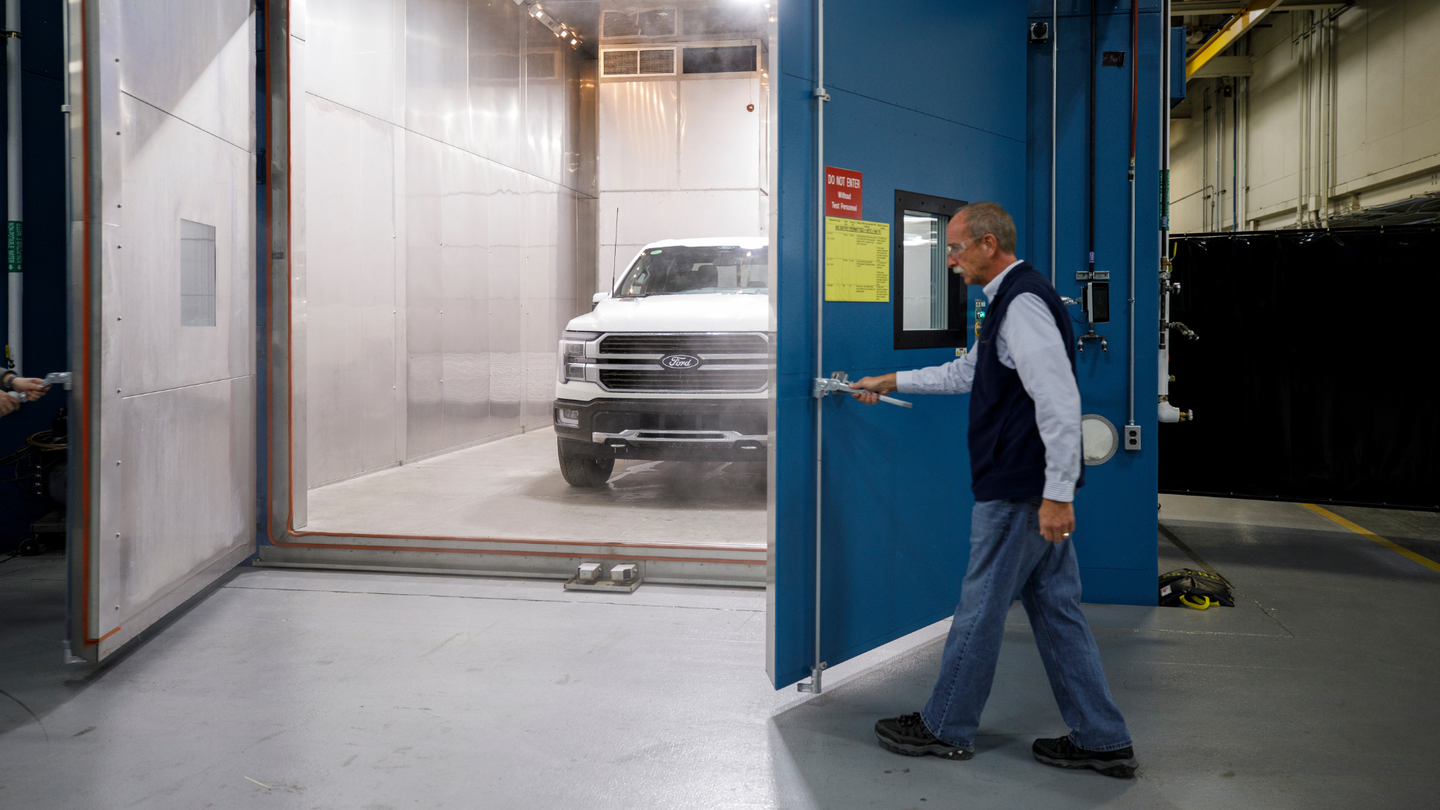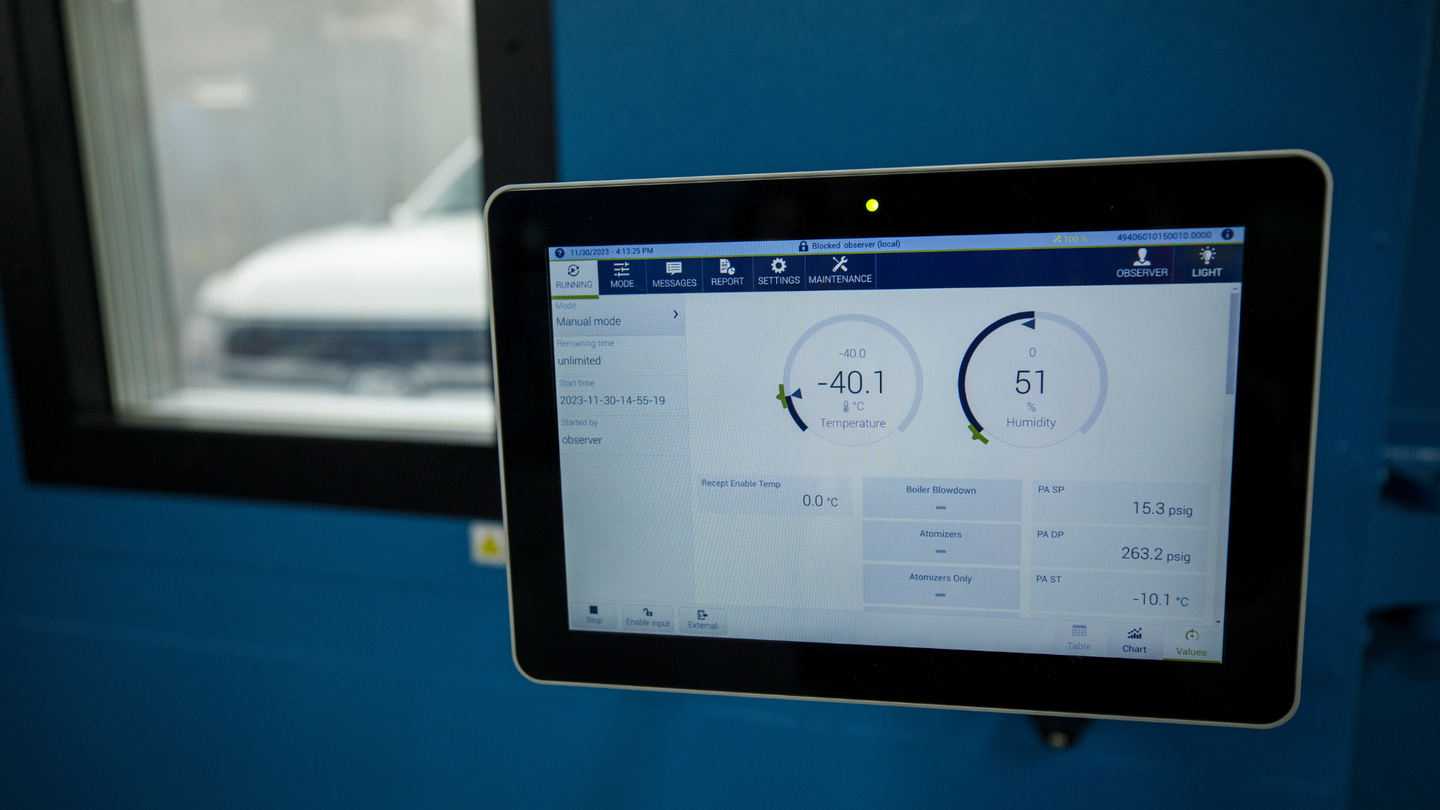The modest Blue Oval emblem has been an enduring symbol in the automobile industry for more than a century, displaying the Ford name in elegant script letters. One might underestimate the significance of the emblem and assume it doesn’t require much attention or consideration, but that is far from the truth. Surprisingly, the emblem undergoes rigorous testing both individually and alongside the vehicles, including exposure to a deep freezer.
It is common knowledge that Ford subjects its vehicles to various tests to ensure their durability for the market. For instance, the Mach-E endured a grueling 300-mile journey on rough chipped-stone roads to assess its paint durability. It also withstood rigorous testing in a wind tunnel and endured 60 clothed car washes. Furthermore, engineers blasted it with 1,700 psi pressure washers from close range to test different components like door seals, badges, headlights, and adhesives.

Ford is renowned for subjecting its test trucks to extreme conditions. For example, they drop 55-gallon drums into the truck beds at an angle to focus all the force on the sharp edge of the drum. Engineers create acid baths to replicate 10 years of corrosion and deploy fleets of robots to impact the trucks, including the emblem.
To test the emblem, the company conducts a rigorous freezing process to ensure the Blue Oval logo remains steadfast under all circumstances. Initially, it undergoes complete saturation in water for 20 minutes. Subsequently, the entire vehicle is transferred to what Ford calls the Freeze Chamber, which resembles a shipping container with a viewing window, akin to something a comic book villain like Mr. Freeze might enjoy.

The engineers program the deep freezer to reach temperatures as low as -40 degrees Celsius (the same in Fahrenheit) to mimic severe winter conditions. (For those curious, the lowest recorded temperature in the U.S. was -80 degrees Fahrenheit in Alaska in 1971).
In addition to freeze testing, Ford repeatedly attaches and detaches the emblem, subjecting the Blue Oval to streams of high-pressure water to ensure its resilience against even the most thorough car washes. Crafted from polymethyl methacrylate, a clear thermoplastic material, the front emblem measures 244 millimeters wide and is produced using three distinct four-cavity molds that can create either blue emblems for regular vehicles or black emblems for special editions.
These emblems deserve appreciation for enduring such grueling tests.
Got a fascinating story? Share it with tips@thedrive.com.
